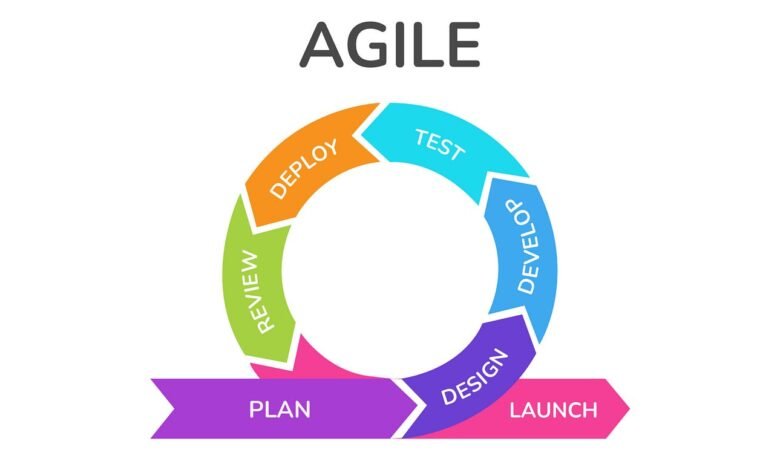Incorporating Agile Methods for Changing Requirements Management in Business Analysis

Adapting to change is crucial for success in the fast-paced world of modern business. Traditional project management methodologies often struggle to keep up with the dynamic nature of requirements, leading to delays, increased costs, and unmet expectations. Agile methods, however, offer a robust framework for managing changing requirements effectively. This blog explores how Agile practices can revolutionize requirements management in business analysis.
Understanding Agile Methodology
Agile methodology is an iterative and incremental approach to project management and software development. It emphasizes flexibility, collaboration, customer satisfaction, and the delivery of small, workable product increments. The Agile Manifesto, created in 2001 by software developers, outlines four core values and twelve principles that prioritize individuals and interactions, working software, customer collaboration, and responding to change over rigid processes and tools.
The Challenge of Changing Requirements
In traditional project management, the requirements phase is typically completed at the beginning of the project. Once requirements are gathered, documented, and approved, they become the foundation for all subsequent project phases. However, this approach can be problematic in a business environment where requirements frequently evolve due to market changes, new technologies, stakeholder insights, and competitive pressures.
Changing requirements can lead to scope creep, where the project’s scope expands beyond its original objectives, causing delays and cost overruns. Traditional methods often lack the flexibility to accommodate these changes efficiently, leading to frustration among stakeholders and project teams. Check out more information about Business Analyst Bootcamp.
Agile to the Rescue: Embracing Change
Agile methods are inherently designed to handle change. Here are several Agile practices that facilitate practical requirements management:
1. User Stories and Backlogs
In Agile, requirements are captured as user stories—short, simple descriptions of features told from the perspective of the user or customer. User stories are stored in a product backlog, a prioritized list of features and requirements. This approach allows teams to focus on delivering the highest-value items first and provides the flexibility to reprioritize as new information emerges.
2. Iterative Development
Agile projects are divided into small, manageable iterations or sprints, typically lasting two to four weeks. A potentially shippable product increment is delivered at the end of each iteration. This iterative approach ensures that feedback is obtained early and often, allowing teams to adjust requirements and priorities based on real-world insights and stakeholder feedback.
3. Continuous Collaboration and Communication
Agile emphasizes continuous collaboration among all project stakeholders, including developers, business analysts, customers, and end-users. Regular meetings, such as daily stand-ups, sprint planning sessions, and sprint reviews, ensure everyone is aligned and aware of changing requirements. This constant communication helps to identify and address issues promptly, reducing the risk of misunderstandings and misaligned expectations. Check out more information about Data Analytics Bootcamp.
4. Flexibility and Responsiveness
Agile methodologies accept that change is inevitable and even desirable. Even late in development, the Agile principle of welcoming changing requirements allows teams to respond to new opportunities and challenges without derailing the project. This flexibility ensures that the final product is more likely to meet the actual needs of the users and the business.
Implementing Agile Methods in Business Analysis
Business analysts (BAs) must adapt their roles and techniques to incorporate Agile methods for changing requirements management. Here are critical strategies for BAs to thrive in an Agile environment:
1. Embrace the Role of a Product Owner
In Agile, the product owner defines and prioritizes the product backlog. BAs can take on this role, leveraging their expertise in understanding business needs and translating them into actionable user stories. By working closely with stakeholders, BAs can ensure that the backlog reflects the most current and valuable requirements.
2. Focus on Value Delivery
BAs should prioritize requirements based on their value to the business and the end-users. This means continuously evaluating and re-evaluating the product backlog to ensure the team constantly works on the most essential features. By focusing on delivering value incrementally, BAs can help the team adapt to changing requirements without losing sight of the project’s overall goals.
3. Facilitate Effective Communication
As facilitators of communication, BAs play a crucial role in ensuring that all stakeholders are engaged and informed. This involves organizing and leading meetings, workshops, and brainstorming sessions to gather and refine requirements. BAs should also document and share insights and decisions promptly to keep everyone on the same page.
4. Adopt Agile Tools and Techniques
To manage changing requirements effectively, BAs should leverage Agile tools such as Kanban boards, task management software, and collaboration platforms. These tools provide visibility into the progress of the project, help track changes, and facilitate communication among team members. Techniques like story mapping and user journey mapping can help BAs visualize and prioritize requirements. Check out more information about IIBA Certifications Training.
5. Continuous Learning and Improvement
Agile methodologies promote a culture of continuous improvement. BAs should regularly seek feedback from stakeholders and team members to identify areas for improvement in their processes and practices. Retrospective meetings at the end of each iteration provide an opportunity to reflect on what went well, what didn’t, and how to improve the next iteration.
This blog is written by Adaptive US. Adaptive US provides success guaranteed CBAP, CCBA, ECBA, AAC, CBDA, CCA, CPOA online, virtual and on-premise training, question banks, study guides, simulators, flashcards, audio-books, digital learning packs across the globe. Adaptive US is the only training organization to offer a promise of 100% success guarantee or 100% refund on its instructor-led training.




